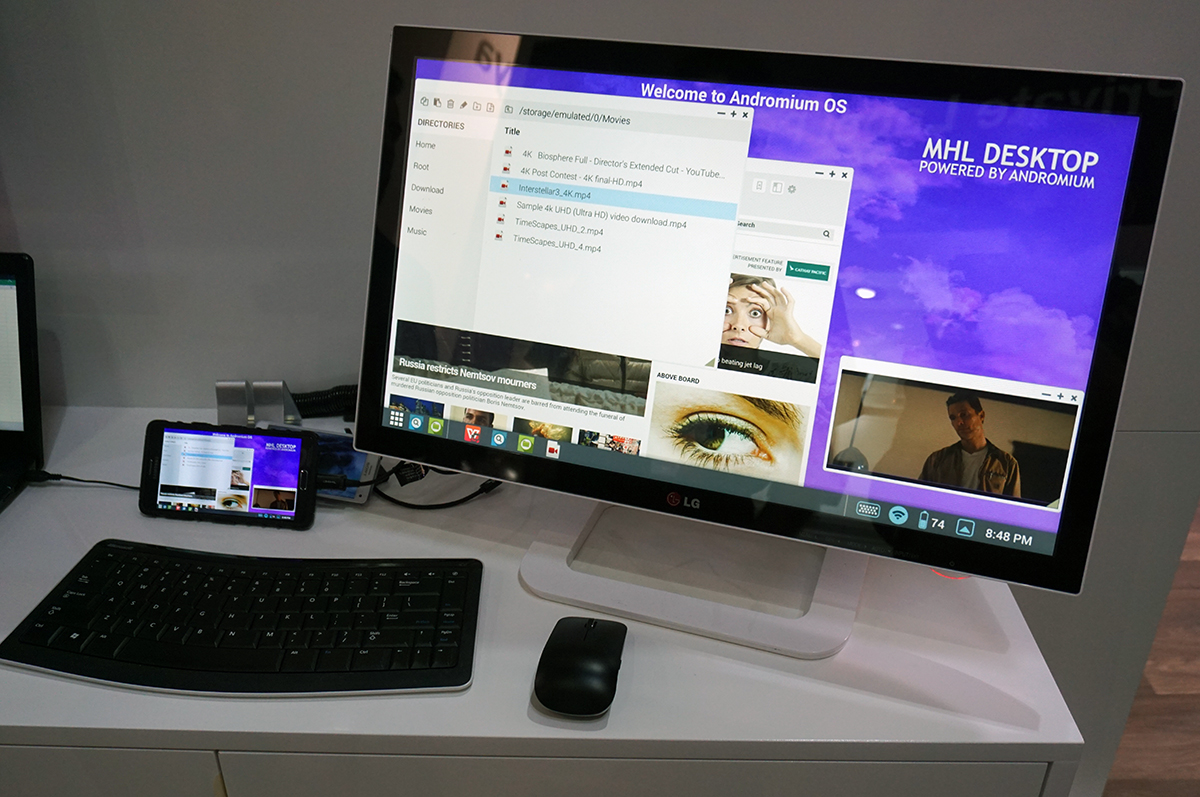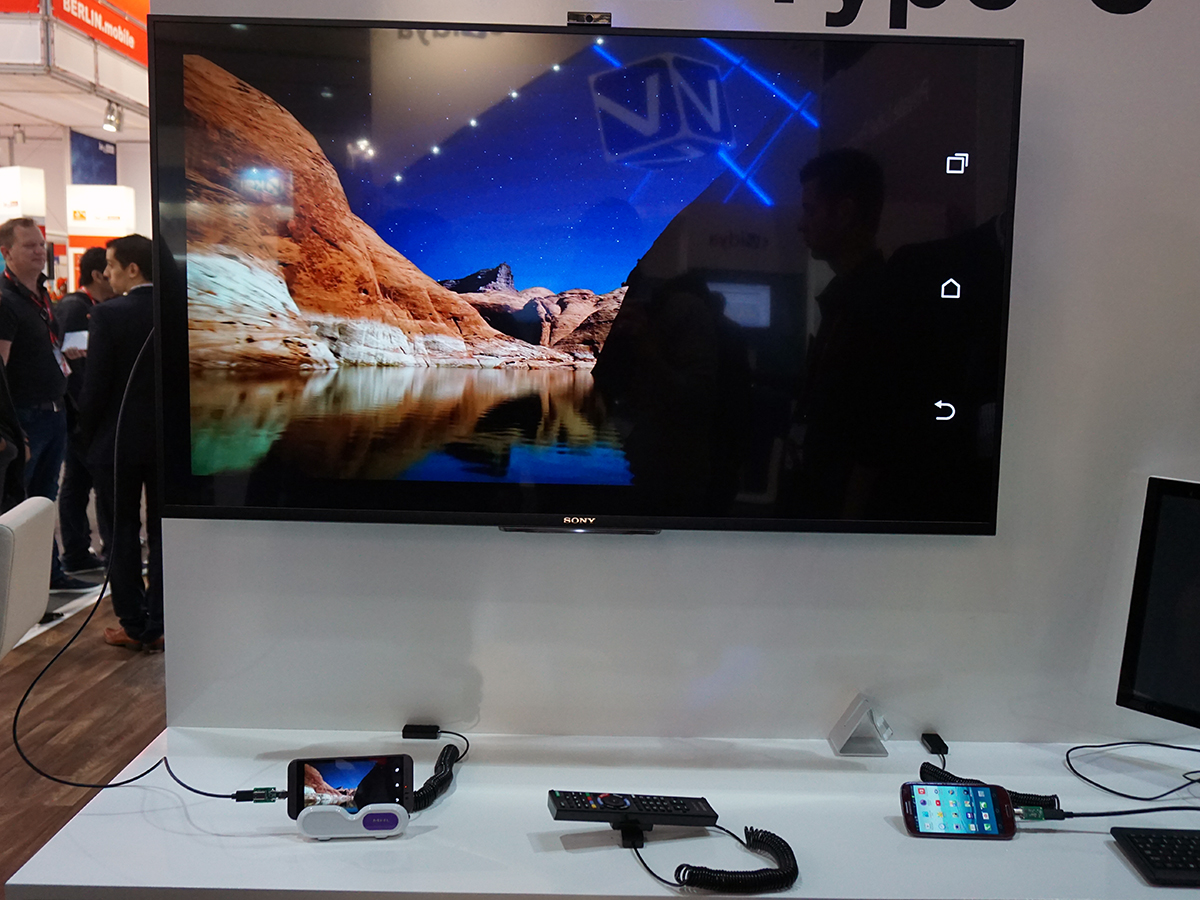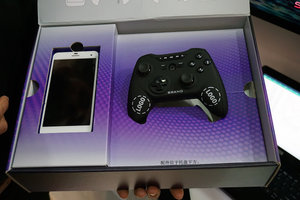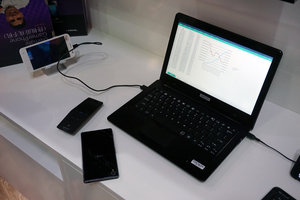MHL Left Holding The Bag On USB Type-C Alt Mode Support
Earlier this month, MHL and Silicon Image announced a pair of single-chip USB Type-C port controllers, the SiI7023 and SiI7033, which support USB Type-C's Alt Mode as well as port configuration switches. These chips can bring impressive docking and expansion capabilities to devices such as smartphones, and from what we saw from MHL at Mobile World Congress, the tech is ready to roll -- but OEMs have let the MHL Consortium down.
The chips support MHL's Alt Mode implementation and Power Delivery and Configuration Channel requirements, meaning they can intelligently allocate power between devices (so your monitor can, for example, charge the smartphone connected to it). They also offer support for uncompressed 4K resolution, lossless Dolby TrueHD and DTS-HD, Remote Control Protocol (RCP) and more.
In terms of products, MHL's Alt Mode support will include devices ranging from phones to notebooks, as well as cables with Type-C on one end and another port (such as HDMI) on the other, adapters of various kinds, and docks and hubs.

Oh, The Places You'll Go
MHL showed us several demos wherein a smartphone was doing impressive things that a smartphone doesn't often do. For example, one smartphone was plugged into a monitor via an MHL-enabled USB Type-C cable so that you could use the device's apps on the big screen. In another, a phone was powering a hi-res display over a similar cable.

The MHL crew also teased some concept designs showing what two MHL-enabled devices and a USB Type-C cable with MHL's Alt Mode implementation could offer. In one case, they showed us a mockup of a package (the "Ultimate GamerPhone") that included a smartphone and a game controller. The idea is that you would buy the phone and the controller as a set, and you could connect your smartphone to any MHL-enabled TV or monitor, connect your controller to the phone wirelessly, and game your brains out.


In another mockup, MHL reps showed a "Smartphone + Smartbook" kit that would have you buy your smartphone along with a "dumb" laptop clamshell. The clamshell would look like a normal laptop, with a keyboard and display, but the actual computer would be your smartphone, connected via an MHL cable with two USB Type-C ports.
Stay On the Cutting Edge: Get the Tom's Hardware Newsletter
Get Tom's Hardware's best news and in-depth reviews, straight to your inbox.
These applications portend a future where the power of your smartphone is effectively unlocked by the connectors and cable it uses.
All Dressed Up…
There's just one problem with MHL's impressive demos: Smartphones don't have USB Type-C ports yet. In fact, most mobile and PC OEMs have not yet integrated USB Type-C ports into many devices at all.
The most notable devices sporting the new connector include Apple's new MacBook (in the most annoying way possible) and Google's latest Chromebook Pixel (in the second most annoying way possible, on a bizarrely expensive laptop replacement). There are several motherboard manufacturers that have announced USB Type-C support, but even that has been somewhat tepid; many of those solutions are just adapter cards that slot into an expansion slot.
In short, the personal computing industry has been terribly gun shy about incorporating USB Type-C into devices, and that's not good news for the likes of MHL.
The MHL reps we talked to at MWC spoke plainly about their disappointment with OEMs and the fact that none had debuted any mobile devices using the USB Type-C port. They said that they were honestly a bit surprised that there weren't any product announcements at the show to speak of that featured Type-C connectors. Despite the letdown, MHL reps told us that they were optimistic that the industry would begin releasing devices rocking the new superport by the end of the year.
We certainly hope MHL is right on that count, particularly on smartphones. MicroUSB has become ubiquitous on non-Apple mobile devices, but aside from being able to pump data and power through the same jack, there's nothing particularly special about microUSB.
The only benefit it ever had over a USB Type-A connector (the standard USB port we all know and love) is size, but the Type-C connector completely obviates that advantage, as it's roughly the same z-height as a microUSB port.
And so we, as consumers, and they, as standard implementers, wait not-so-patiently for the industry to get with the program and give us the connectors that will take our devices to the next level.
Follow Seth Colaner @SethColaner. Follow us @tomshardware, on Facebook and on Google+.
-
TNT27 ReplyI dream of the day I power my monitor with the display cable
I dream of the day I power my monitor with wireless tech like bluetooth -
PaulBags Would love to plug my phone Into my monitor, mouse, keyboard, and charger all at once; maybe in a dock that acts as a kvm switch. Seems like a waste of power to turn my desktop on for a bit of light surfing.Reply
The laptop shell would be nice too. Less expense to worry about going missing from a bag or locker, while the real expense & power stays in your pocket. -
Onus A couple years ago (with a Sky Lake article?), I said how nice it could be if the phone could be the brains of your PC, and run in different modes, e.g. very low power when just acting like a phone, but ramping up if it is docked to additional peripherals, possibly to include drives, additional graphics horsepower, and/or keyboard/mouse/monitor. It would need better cooling in higher-powered modes, but that could be provided by a Peltier plate on the phone, or other interface to a heat sink. An interface that could make this happen is a good development.Reply